This article needs additional citations for verification .(October 2007) |

Government House, located in Adelaide on the corner of North Terrace and King William Road, is the official residence of the governor of South Australia.
This article needs additional citations for verification .(October 2007) |

Government House, located in Adelaide on the corner of North Terrace and King William Road, is the official residence of the governor of South Australia.



The original 'Government Hut' was a thatched hut constructed by the seamen of HMS Buffalo. Governor John Hindmarsh wrote in May 1837 "I have but one end of my mud hut finished an all my family lay on the floor of one room while two smaller ones serve for Mrs. H., myself and a female servant." When Lieutenant Colonel George Gawler replaced Hindmarsh in 1838, he abandoned plans for a permanent house of timber and gave directions for the erection of a new building of masonry to cost £4,000 - if possible, but not to exceed £5,000. [1]
A plan had been obtained from an English architect, Edward O'Brien, but this was amended by George Strickland Kingston, who had come to South Australia as an assistant to the Surveyor General, William Light, and who had had some experience in architecture and building. When Kingston received tenders for the proposed work they were in the vicinity of £7,000. After further amendment of the plans to reduce the cost, a contract was let to the builders, Messrs East and Breeze. After Governor Gawler was recalled to England in 1841, partly because of his "extravagant" building programs, his successors George Grey and Lieutenant Colonel Frederick Holt Robe found it necessary to spend the least possible amount on the house.
The earliest part of the House to be built was the east wing of the present building. It was completed and occupied in May 1840. Government House is thus probably the second oldest continuously occupied house in the State, after Walkley cottage in St Mark's College, Pennington Terrace, North Adelaide, which was first occupied in mid-1839. When completed, Government House consisted of the present main Drawing Room, Morning Room, Small Dining Room, and upstairs there were three bedrooms, a dressing room and two small servants' rooms. Governors, their families and house guests make use of all the upstairs rooms.
It was listed on the South Australian Heritage Register on 24 July 1980 and on the defunct Register of the National Estate on 21 March 1978. [2] [3]
The eastern Kintore Avenue boundary of the grounds of Government House was stepped back by 10 metres during 2015-2016, to make way for the construction of the Anzac Centenary Memorial Walk connecting the National War Memorial on North Terrace to the Torrens Parade Ground. [4] The walkway was completed in 2016. [5]
Governors formerly used a summer residence in the Adelaide Hills to escape the heat of the Adelaide Plains. Two buildings were used for this purpose. The first of these, Old Government House, was built in what is now the Belair National Park in 1860. In 1880, this building was superseded by a larger residence at Marble Hill near Norton Summit, until it was destroyed in the Black Sunday bushfires of 1955. Subsequently, the Governor was not provided with a summer residence.
Government House is located in well kept grounds which are periodically used for important public ceremonies, such as:
In 2019 a Government House Arts Residency program was instituted, with the inaugural recipient being Margaret Worth. [6]
Cottages were built in the northern part of the grounds, originally for the butler (1928) and the chauffeur (1945). [7] The grounds of Government House itself are surrounded by prominent public buildings, statues and memorials:
| Wikimedia Commons has media related to Government House, Adelaide . |
Coordinates: 34°55′12″S138°36′01″E / 34.920126°S 138.600321°E
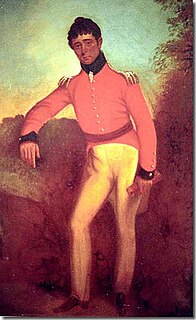
William Light, also known as Colonel Light, was a British-Malayan naval and army officer. He was the first Surveyor-General of the new British Province of South Australia, known for choosing the site of the colony's capital, Adelaide, and for designing the layout of its streets, six city squares, gardens and the figure-eight Adelaide Park Lands, in a plan later sometimes referred to as Light's Vision.
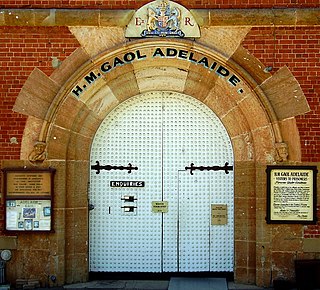
Adelaide Gaol is a former Australian prison located in the Park Lands of Adelaide, in the state of South Australia. The gaol was the first permanent one in South Australia and operated from 1841 until 1988. The Gaol is one of the two oldest buildings still standing in South Australia, the other being Government House which was built at the same time. The prison is now a museum, tourist attraction and function centre.

Sir Robert Richard Torrens,, also known as Robert Richard Chute Torrens, was an Irish-born parliamentarian, writer, and land reformer. After a move to London in 1836, he became prominent in the early years of the Colony of South Australia, emigrating after being appointed to a civil service position there in 1840. He was Colonial Treasurer and Registrar-General from 1852 to 1857 and then the third Premier of South Australia for a single month in September 1857.

This article details the History of Adelaide from the first human activity in the region to the 20th century. Adelaide is a planned city founded in 1836 and the capital of South Australia.

North Terrace is one of the four terraces that bound the central business and residential district of Adelaide, the capital city of South Australia. It runs east–west, along the northern edge of "the square mile". The western end continues on to Port Road, and the eastern end continues across the Adelaide Parklands as Botanic Road.
Plympton is an inner south-western suburb of Adelaide, South Australia. The name is believed to have been given by Henry Mooringe Boswarva to a private subdivision in the area, naming after his home town in Devon, England. It was accepted as an official name for the suburb in 1944.
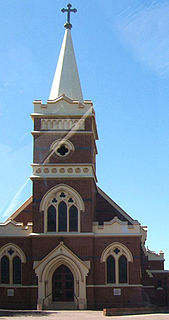
Thebarton, formerly Theberton, on Kaurna land, is an inner-western suburb of Adelaide, South Australia in the City of West Torrens. The suburb is bounded by the River Torrens to the north, Port Road and Bonython Park to the east, Kintore Street to the south, and South Road to the west.

The Anzac Highway is an 8.7-kilometre-long (5.4 mi) main arterial road heading southwest from the city of Adelaide, the capital of South Australia, to the beachside suburb of Glenelg.
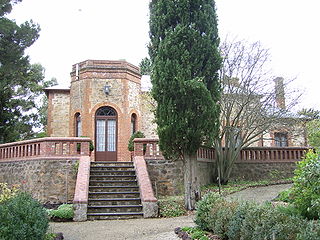
Old Government House is an historic building located in Belair National Park, South Australia, and was South Australia’s first official vice-regal summer residence of the Governor of South Australia from 1860-1880, and was used by governors Richard Graves MacDonnell (1855–62), Dominick Daly (1862-68) and William Jervois (1877–80). It was constructed from local sandstone, with the red-brick for the quoins sourced from the Blackwood brickworks, and a native timber shingle roof. The residence's indoor plunge-pool was reportedly the first in the colony.

Adelaide city centre is the inner city locality of Greater Adelaide, the capital city of South Australia. It is known by locals simply as "the City" or "Town" to distinguish it from Greater Adelaide and from the City of Adelaide local government area. The population was 15,115 in the 2016 census.

Ovingham is an inner northern suburb of Adelaide, South Australia. It is located in the cities of Charles Sturt and Prospect.
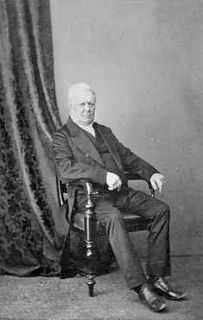
Sir James Hurtle Fisher was a lawyer and prominent South Australian pioneer. He was the first Resident Commissioner of the colony of South Australia, the first Mayor of Adelaide and the first resident South Australian to be knighted.

Kilkenny is an inner north-western suburb of Adelaide, South Australia. It is located in the City of Charles Sturt. It is named after Kilkenny, Ireland.

Hindmarsh is an inner suburb of Adelaide, South Australia. It is located in the City of Charles Sturt.
Adelaide has two city ring routes, that loop around the Adelaide city centre and North Adelaide, known as the Inner and Outer Ring Routes.

Park 12, is one of the 29 Parks that make up the Adelaide Park Lands. It consists of 55.5 hectares bounded by North Terrace, Frome Road, Sir Edwin Smith Avenue and King William Road

James Shaw was a Scottish painter, photographer, engraver, lithographer, surveyor, and lawyer. He was also an early colonist of South Australia.
Hindmarsh was an electoral district of the House of Assembly in the Australian state of South Australia from 1938 to 1970. It was in the northwestern suburbs of Adelaide.

The Torrens Building, named after Sir Robert Richard Torrens, is a State Heritage-listed building on the corner of Victoria Square and Wakefield Street in Adelaide, South Australia. It was originally known as the New Government Offices, and after that a succession of names reflecting its tenants, including as New Public Offices, the Lands Titles Office, and Engineering & Water Supply Department. It has been home to a number of government departments for much of its existence.
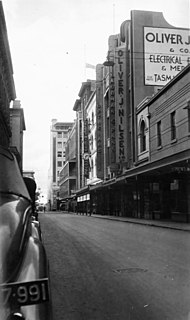
Gawler Place is a single-lane road in the city centre of Adelaide, the capital of South Australia. It runs north to south from North Terrace to Wakefield Street, parallel to and approximately midway between King William and Pulteney Streets.